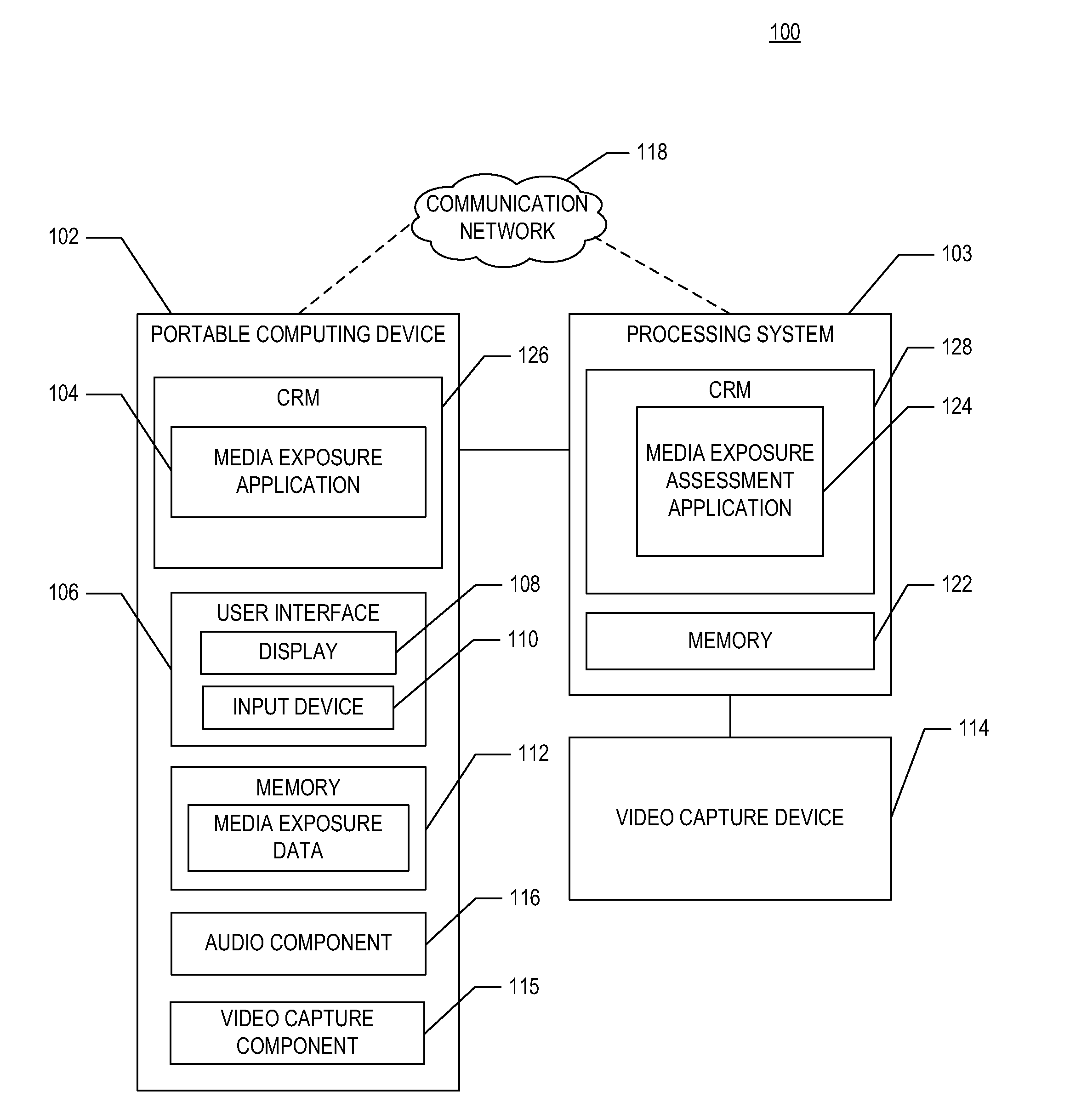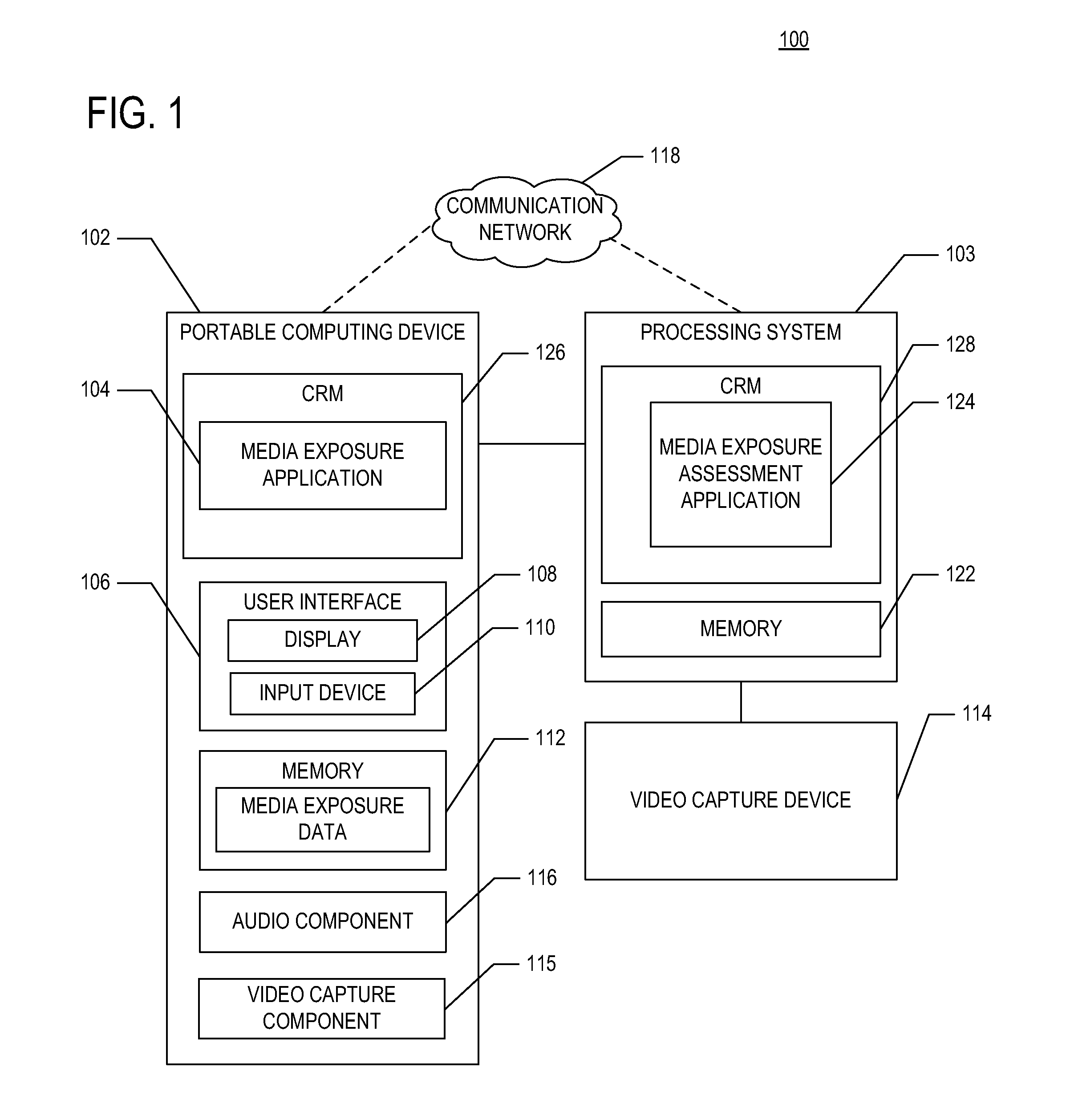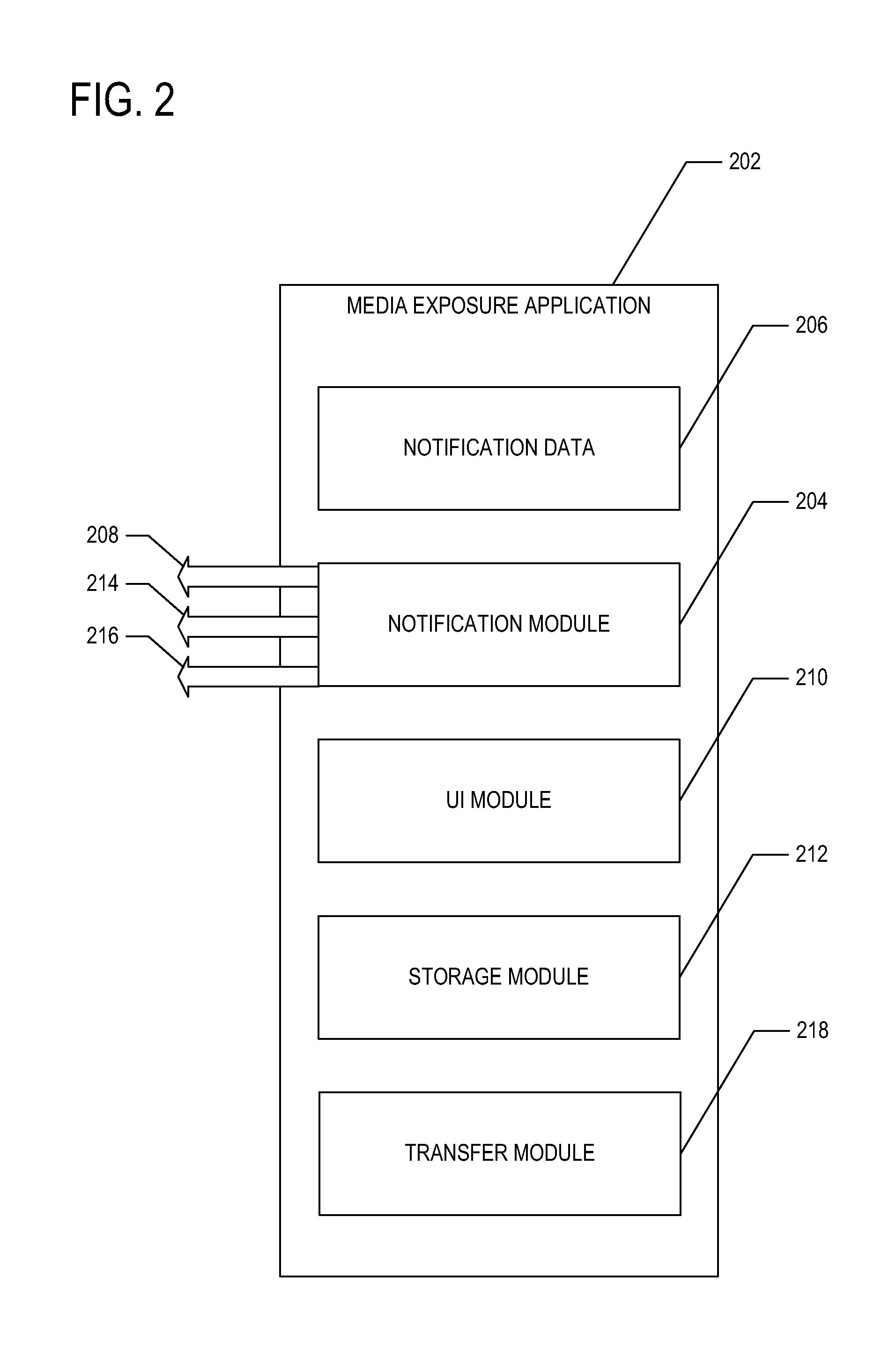Methods and systems for measuring exposure to media
- Summary
- Abstract
- Description
- Claims
- Application Information
AI Technical Summary
Benefits of technology
Problems solved by technology
Method used
Image
Examples
example 1
Measurement of Youth Exposure
[0098]The following example demonstrates use of the method for measuring media exposure in teenaged subjects. Subjects were recruited from an urban hospital-based primary care clinic to obtain ≧3 participants of each sex in pre-teen (10-12 years), early teen (13-15) and late teen (16-18) age groups. Participants were asked to implement 4 media exposure data collection methods: recall questionnaire (RQ), time-use diary (TUD), and two momentary sampling methods, electronic reports (MS-ER) and video surveys (MS-VS). Upon enrollment, participants completed RQ0 for the previous weekday's exposure to television, videogames, music, phone, computer, and print. Over one week, subjects completed TUDs of their activities, as well as MS-ESs and MS-VSs of current media exposure in response to random alarms from a PDA. At the end of the week, participants completed RQ1. Descriptive statistics were calculated and findings among methods were compared.
[0099]Eleven of 19 ...
example 2
Data Management and Quality Control
[0101]The study handheld computers will be synced with the research laptop at each subject's Completion Assessment visit and the MS-ER data uploaded. The data will be converted from an ASCII file into Microsoft Excel. Each subject's MS-ER data file for will be coded and merged into a single MS database. The MiniDV videotapes will be dubbed to VHS tape. The RA will screen and log the VHS tapes, noting media exposure context, all foreground (active use) and background (heard from other room or seen in distance) media exposure and content of the media observed. These data will be coded and entered into Microsoft Excel to be merged time synchronously with the MS-ER data. The TUD data will be double-entered into Microsoft Excel and merged time synchronously with the MS-ER and MS-VS data. The A-CASI data will be uploaded into a Microsoft Excel file immediately after subjects complete each A-CASI assessment. Once both are collected for a subject, the Base...
example 3
[0104]Power. To achieve our first aim, to assess the feasibility and acceptability of the present invention for measuring media use and exposure in adolescents, we will use both descriptive and inferential statistical procedures. For the descriptive procedures, we will employ measures such as percents to characterize the proportion of subjects who enroll, who comply with different measurement procedures, and who drop out. We expect to enroll a total of 120 adolescents for the first assessment and retain a minimum of 110 for the second assessment. If we assume the sample size of 120 adolescents from the baseline assessments, we will be able to estimate these percentages to within 8.9 percentage points with 95% confidence. A sample of 110 reduces precision only slightly to 9.3 percentage points with 95% precision. For the inferential procedures we propose to make group comparisons with respect to sociodemographic characteristics using t-tests and chi-square tests of indep...
PUM
 Login to View More
Login to View More Abstract
Description
Claims
Application Information
 Login to View More
Login to View More - R&D
- Intellectual Property
- Life Sciences
- Materials
- Tech Scout
- Unparalleled Data Quality
- Higher Quality Content
- 60% Fewer Hallucinations
Browse by: Latest US Patents, China's latest patents, Technical Efficacy Thesaurus, Application Domain, Technology Topic, Popular Technical Reports.
© 2025 PatSnap. All rights reserved.Legal|Privacy policy|Modern Slavery Act Transparency Statement|Sitemap|About US| Contact US: help@patsnap.com



